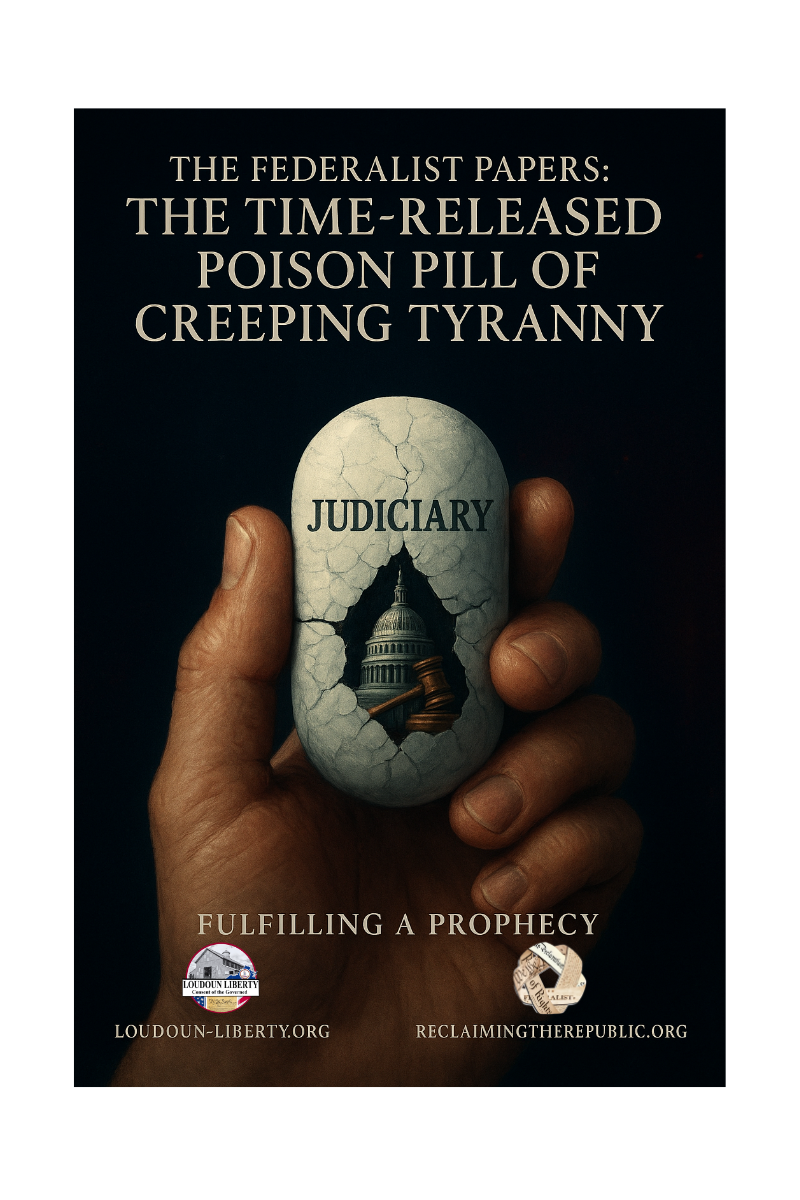The Federalist Papers: The Time-Released Poison Pill of Creeping Tyranny
What if everything you’ve been taught about the founding of our republic was only half the story?
The Promise and the Prophecy
We were told the Federalist Papers were a brilliant defense of the U.S. Constitution, a blueprint for the greatest experiment in self-governance ever conceived. But what if, hidden within those powerful arguments, was a “time-released poison pill” designed to slowly erode the very liberty they claimed to protect?
This isn’t a conspiracy theory. It’s an inconvenient truth buried in our history—a design flaw that has led directly to the overreaching, unaccountable government we now face. Let’s be clear from the start: **the Federalist Papers are not law**.
The Poison Pill Was Activated Over Time
The Federalist Papers were not a poison pill that detonated all at once. It was a time-released capsule, a subtle but brilliant design flaw that has slowly corroded the foundation of our self-governing republic. The judiciary, which Hamilton promised was the “least dangerous branch,” has become one of the most powerful. Its power did not appear out of thin air. It grew through a series of key historical moments where the courts seized authority never granted to them. These moments weren’t just legal decisions. They were fundamental usurpations that fundamentally altered the relationship between the people and their government, stripping us of our rights and our ability to govern ourselves.
1. The Point of Activation: *Marbury v. Madison* (1803)
Chief Justice John Marshall asserted the power of **judicial review**, a power not found in the Constitution itself. In one single act, he gave the courts the power to veto the will of the people’s elected representatives. This moment was the “activation” of the poison pill.
2. The Nullification of Rights: *Dred Scott v. Sandford* (1857)
This case is a historic low point for the judiciary and a stark warning of what happens when judges interpret the Constitution to fit their political agendas. Chief Justice Roger Taney went far beyond the scope of the case, ruling that people of African descent, whether free or enslaved, were not and could never be citizens of the United States. He then declared the Missouri Compromise unconstitutional.
3. The End of Limited Government: The Commerce Clause
The Supreme Court radically reinterpreted the **Commerce Clause**, expanding its definition to mean that Congress could regulate *anything* that had a “substantial effect” on interstate commerce. With this one change in legal theory, Congress was given a blank check to regulate nearly every aspect of American life. This turning point permanently destroyed the idea of a federal government of limited, enumerated powers.
Reclaim the Republic. One County at a Time.
The antidote to federal overreach and alleged fraud is in our hands. The path to restoring the Republic is to take back control at the **county level** using your inherent constitutional authority.
Demand Accountability
Initiate the **Constitutional Petition Process** to compel your county officials to investigate and demand transparency regarding unconstitutional federal mandates. This is a formal, lawful process to hold local government accountable.
Declare a Constitutional County
Work with your community to have your county commissioners pass an ordinance formally declaring your county a Constitutional County. This asserts that your community will not cooperate with unconstitutional federal actions that violate the rights of its citizens.
Activate Interposition
Embrace the constitutional principle of **Interposition**. This is not nullification or rebellion, but a deliberate, lawful act where a state or county stands between its citizens and an unconstitutional federal mandate. It’s the peaceful and sovereign refusal to comply with tyranny.
Learn more about the processes and empower your community.

